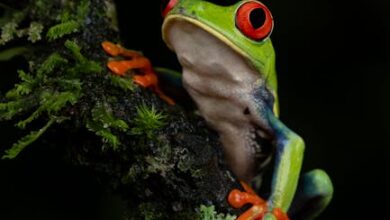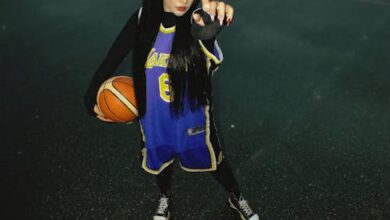The Echoes of a Disallowed Equaliser: Van Dijk’s Moment in the Sun, or Shadow?

In the high-stakes world of top-tier football, every single decision, every bounce of the ball, can mean the difference between glory and disappointment. Few things ignite a post-match debate quite like a goal disallowed, especially when it involves two giants clashing. And when a new manager steps into the spotlight to voice his strong opinion on such a moment, the footballing world sits up and takes notice.
That’s precisely what happened after a recent encounter between Liverpool and Manchester City, a match that, for Reds fans, held an extra layer of sting beyond the 3-0 scoreline. It wasn’t just the defeat; it was the ‘what if’ of a disallowed equaliser that echoed long after the final whistle. New Liverpool manager Arne Slot, never one to shy away from an honest assessment, made it unequivocally clear: he believes his side should have been awarded that crucial goal.
This isn’t just about a single refereeing call; it’s about the ever-present tension between the letter of the law, the spirit of the game, and the human element in judging those razor-thin margins. It forces us to ask: where do we draw the line, and how much is too much when it comes to technological intervention in a game built on raw passion and split-second instincts?
The Echoes of a Disallowed Equaliser: Van Dijk’s Moment in the Sun, or Shadow?
Let’s rewind to the moment that has sparked so much discussion. Manchester City, having taken an early lead through the prolific Erling Haaland, were suddenly staring down the barrel of a Liverpool comeback. From a well-delivered corner, Virgil van Dijk, Liverpool’s colossus at the back, rose majestically to power a header towards goal. The net rippled, the travelling support erupted, and for a fleeting second, parity seemed restored.
But in modern football, that immediate celebration is often tempered by a collective holding of breath, a glance towards the referee’s ear, waiting for the inevitable VAR check. And check they did. The ruling came down: no goal. Andy Robertson, Liverpool’s dynamic left-back, was deemed to be in an offside position and, crucially, interfering with play.
Arne Slot’s reaction wasn’t one of polite disagreement; it was one of firm conviction. He reportedly stated that the goal “should have been awarded,” a sentiment that resonates deeply with anyone who watched the replay. The core of the argument often boils down to the subjective interpretation of “interfering with play.” Was Robertson genuinely obstructing the goalkeeper’s line of sight or ability to save? Or was he simply in a general area, with the ball’s trajectory and the crowd of players making the save inherently difficult regardless?
This isn’t a new debate. We’ve seen countless goals chalked off for similar instances, often leading to widespread confusion and frustration among fans and pundits alike. The intent behind the offside rule is clear – to prevent players from gaining an unfair advantage by loitering in advanced positions. But its application, particularly in crowded penalty boxes during set pieces, often feels like navigating a legal minefield blindfolded.
Navigating the VAR Labyrinth: The Subjectivity of “Interfering”
The introduction of VAR was heralded as a step towards greater accuracy and fairness in football. No longer would monumental errors dictate the outcome of crucial matches, or so we hoped. Yet, paradoxically, VAR has often introduced a new layer of controversy, shifting the debate from clear and obvious errors to the nuanced, often subjective interpretation of the rulebook.
The Fine Line Between Presence and Influence
The offside rule regarding “interfering with play” is perhaps one of the most contentious clauses. A player can be offside, but unless they actively impact an opponent’s ability to play the ball or gain an advantage from their position, the goal should stand. The challenge lies in defining “active impact.” Is simply being in the vicinity enough? Does a subtle movement constitute interference? These are the questions that plague officials in the VAR booth and managers on the touchline.
In the case of Robertson, proponents of the decision would argue that his offside presence, however slight, could have distracted the goalkeeper or narrowed his field of vision. Opponents, like Slot, would counter that in a packed penalty area, especially from a corner, there are always bodies. To deem Robertson’s position as definitive interference feels, to many, like an overreach, prioritising the minutiae of the rule over the flow and spirit of the game.
It highlights a fundamental tension: we want precision, but football is inherently chaotic and fluid. Applying rigid rules to fluid situations will always create friction. The human eye, in real-time, often makes an instinctive judgment based on the overall play, something VAR, with its frame-by-frame analysis, struggles to replicate without stripping away context.
Beyond the Moment: The Broader Implications for Liverpool and Slot
While the immediate sting of the disallowed goal is the most palpable consequence, Arne Slot’s comments carry a deeper significance for Liverpool and his burgeoning tenure.
A Manager’s Stance and Team Morale
For a new manager, particularly one stepping into a club with the history and expectations of Liverpool, every public statement is scrutinised. Slot’s firm assertion that the goal “should have stood” is more than just an opinion; it’s a statement of intent. It shows he’s not afraid to back his players, to challenge decisions that he feels are unjust, and to fight for every inch. This kind of unwavering support can be invaluable for team morale, especially in the wake of a tough defeat. It tells his squad that he’s in their corner, understanding their frustration and advocating for them.
It also subtly communicates his understanding of the game’s nuances. He’s not just looking at the black and white of the rulebook but considering its practical application and the spirit in which football is meant to be played. This empathy with the on-field experience is crucial for building trust and respect within the squad.
The Margin for Error in Title Races
In competitions like the Premier League, where titles are often decided by goal difference or a single point, every goal, every decision, takes on monumental importance. Had Van Dijk’s goal stood, it would have changed the immediate complexion of the game, potentially altering the momentum and leading to a different outcome. Even if Liverpool still lost, reducing the deficit could be significant over the course of a season.
These fine margins are what make top-flight football so compelling and, at times, so frustrating. Managers, players, and fans alike crave consistency and clarity in officiating, understanding that while human error is inevitable, preventable errors due to overly complex interpretations of rules can feel truly unjust.
The Ongoing Dialogue: Striking the Right Balance
Arne Slot’s remarks serve as a potent reminder of the ongoing dialogue surrounding officiating, VAR, and the very essence of football. We all want a fair game, but how we achieve that fairness is a constant point of contention. Is it through hyper-precision, even if it dissects the organic flow of the game? Or is there a need for more common sense, a greater appreciation for the live action, and perhaps a slightly higher threshold for intervention?
Ultimately, football’s beauty lies in its unpredictability, its raw emotion, and its capacity for moments of sheer brilliance. While technology aims to refine the game, it must be wielded with an understanding that it serves the sport, not the other way around. Slot’s belief that Liverpool’s goal should have stood isn’t just about one game; it’s a voice in the wilderness calling for a balance, a plea for football to remain human at its core, even as it embraces the digital age.
As the season progresses, such flashpoints will undoubtedly recur. What remains crucial is an open conversation about how we evolve the game, ensuring that while we strive for accuracy, we never lose sight of the passion, the drama, and the inherent, sometimes messy, humanity that makes us fall in love with football in the first place.





